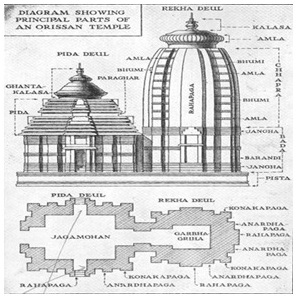

Context
The Ministry of New and Renewable Energy (MNRE) has taken up the complete solarisation of Konark Sun Temple and Konark town in Odisha.
About
About Scheme:
- The scheme plans to set up the 10-MW grid-connected solar project and various solar off-grid applications such as solar trees, solar drinking water kiosks, and off-grid solar power plants with battery storage,
- It is not just the temple; even the Konark town will be covered as part of the scheme.
- The implementation of this project will be done by the Odisha Renewable Energy Development Agency (OREDA)
- Also, 100% central financial assistance of around 25 crores from the Government of India through the MNRE.
About Konark Sun Temple:
- The temple is a World Heritage Site is situated in the eastern state of Odisha and is a massive temple dedicated to the Sun God temple.
- The alignment of the Sun Temple is in the east-west direction.
- Great poet Rabindranath Tagore wrote of Konark: “Here the language of stone surpasses the language of man.”
- The main Temple was called by European sailors "The Black Pagoda" as it formed an important landmark for them in their coastal voyage.
- It forms part of the golden triangle of Odisha, along with Puri and Bhubaneswar, and attracts tourists, pilgrims, and history and art lovers.
- It was built by King Narasimhadeva I of the Eastern Ganga dynasty from 1238-1250 CE.
- The Sun temple belongs to the Kalinga School of Indian Temples.
- Its architecture has all the defining elements of the Kalinga architecture. It includes:
-
- Shikhara (crown)
- Jagmohana (audience hall)
- Natmandir (dance hall)
- Vimana (tower)
- In Kalinga Architecture, basically a temple is made in two parts, a tower and a hall.
-
- The tower is called deula
- The hall is called jagmohan.
- The walls of both the deul and the jagmohan are lavishly sculpted with architectural motifs and a profusion of figures.
- The most repeated form is the horseshoe shape, which has come from the earliest times, starting with the large windows of the chaitya-grihas.
- Examples of Kalinga architecture:
-
- Rajarani temple (Bhubaneshwar)
- Jagannath Temple, Puri


